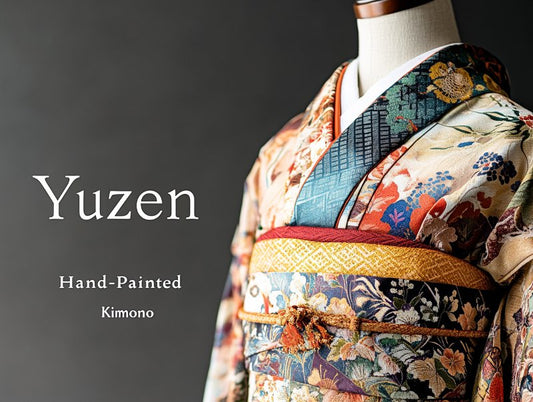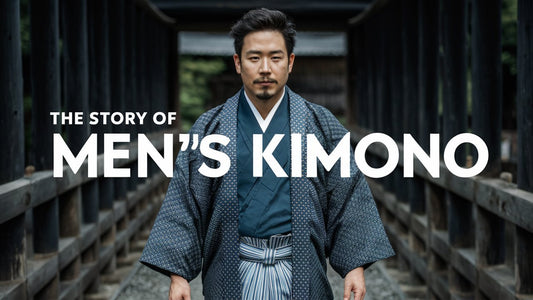
The Art of Yuzen Style Kimono
Share
The Yuzen style kimono is a captivating blend of intricate artistry and rich cultural heritage. This traditional Japanese art form brings vibrant patterns to life on luxurious silk fabrics, creating garments that are both visually stunning and deeply meaningful. In this article, we explore the history, techniques, and cultural significance of Yuzen style kimonos.
What is Yuzen Painting?
Yuzen painting, or Yuzen-zome, is a traditional Japanese dyeing technique used to create detailed, freehand designs on fabric, primarily silk. Named after the Edo-period artist Miyazaki Yuzen, this method involves applying a resist paste to outline intricate patterns, followed by the careful application of vibrant dyes. The result is a stunning piece of art that combines the precision of painting with the beauty of textile design.
The History of Yuzen Style Kimono
Origins in the Edo Period
Yuzen dyeing, or Yuzen-zome, originated during the Edo period (1603-1868). It was named after Miyazaki Yuzen, a famous fan painter from Kyoto, who developed this unique technique. Yuzen's innovation allowed for the creation of detailed, freehand designs on fabric, revolutionizing kimono art.

Evolution Over Centuries
Over the centuries, Yuzen dyeing evolved, incorporating new materials and methods. The Meiji period (1868-1912) saw the introduction of synthetic dyes, expanding the color palette available to artists. Despite these changes, the core techniques and artistic principles of Yuzen have remained largely unchanged, preserving its traditional essence.
Techniques of Yuzen Dyeing
Drawing the Design
The first step in Yuzen dyeing is sketching the design on the fabric using a water-soluble resist paste called Nori. This paste creates outlines that prevent dyes from spreading, allowing for precise, intricate patterns. Artists often draw inspiration from nature, depicting flowers, birds, and landscapes with exceptional detail.
Applying the Dyes
Once the design is outlined, artists carefully apply dyes using brushes. This process, known as Tegaki Yuzen or hand-painted Yuzen, requires great skill and patience. Each color is applied separately and allowed to dry before the next one is added, ensuring clarity and vibrancy.
Fixing the Colors
After the dyeing process, the fabric undergoes steaming to set the colors. This step, called Mushiai, enhances the durability and brilliance of the hues. Finally, the Nori paste is washed away, revealing the completed design.
Cultural Significance of Yuzen Kimono
Symbolism and Meaning
Yuzen kimonos are not just beautiful garments; they carry profound cultural significance. The motifs and colors used often symbolize various aspects of Japanese culture and beliefs. For instance, cranes represent longevity, while cherry blossoms signify the fleeting beauty of life.
Occasions and Uses
Traditionally, Yuzen kimonos are worn on special occasions such as weddings, tea ceremonies, and festivals. They are treasured heirlooms, passed down through generations, symbolizing familial bonds and cultural heritage.
Preserving the Art of Yuzen
Modern Adaptations
In the modern era, Yuzen dyeing continues to thrive, with artists adapting traditional techniques to contemporary fashion. This fusion of old and new ensures that Yuzen remains relevant and appreciated in today's world. Modern Yuzen kimonos and accessories are now seen on runways and in fashion collections globally.
Supporting Artisans
Supporting Yuzen artisans is crucial for preserving this cultural heritage. By purchasing authentic Yuzen products and learning about the art form, individuals can contribute to the continuation of this beautiful tradition.
Conclusion
The Yuzen style kimono is a testament to the exquisite craftsmanship and rich cultural history of Japan. Its intricate designs and vibrant colors reflect the beauty of nature and the depth of Japanese artistic tradition. By understanding and appreciating Yuzen, we honor the artisans who dedicate their lives to this remarkable art form.
For more insights into traditional Japanese arts and modern luxury adaptations, visit KimonoKoi. Explore our collection of exquisite garments that blend tradition with contemporary elegance.


